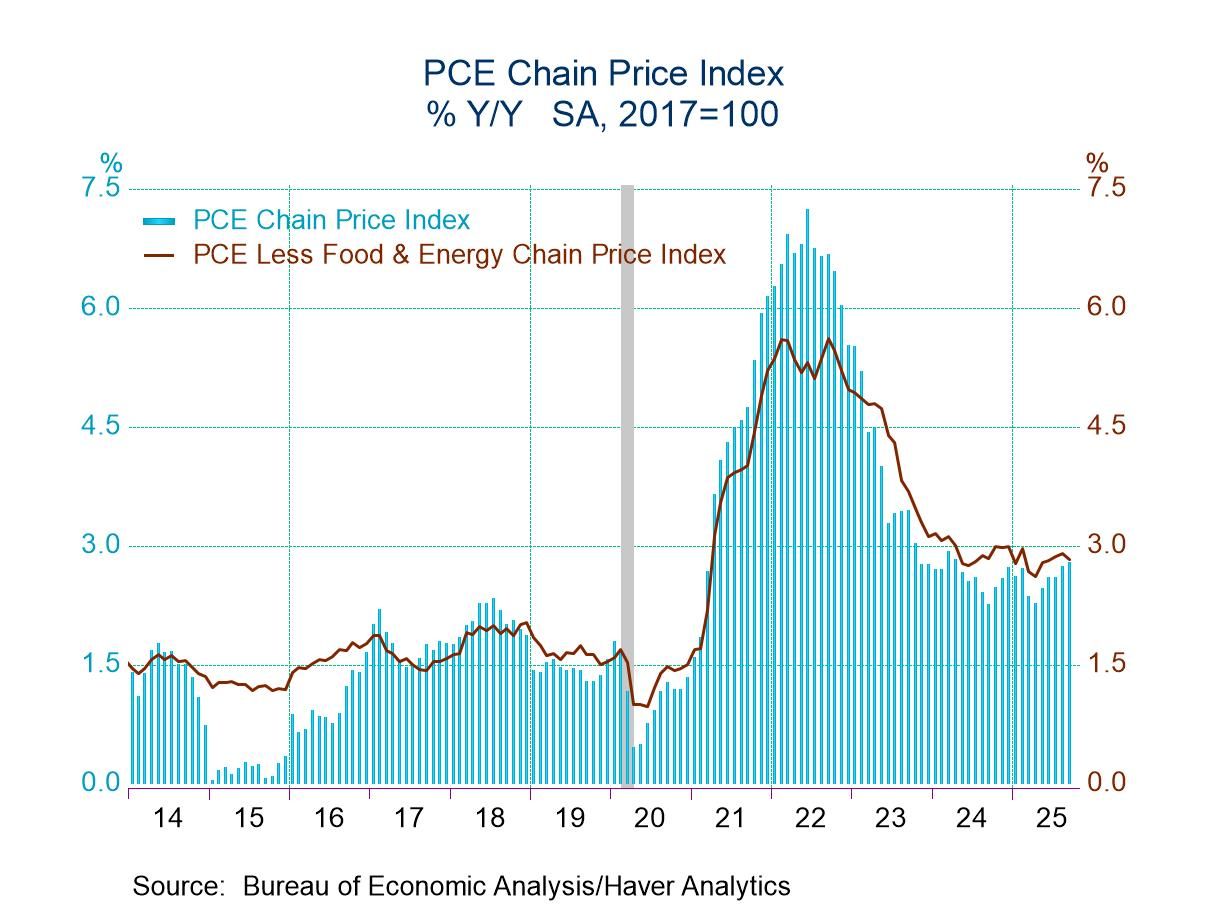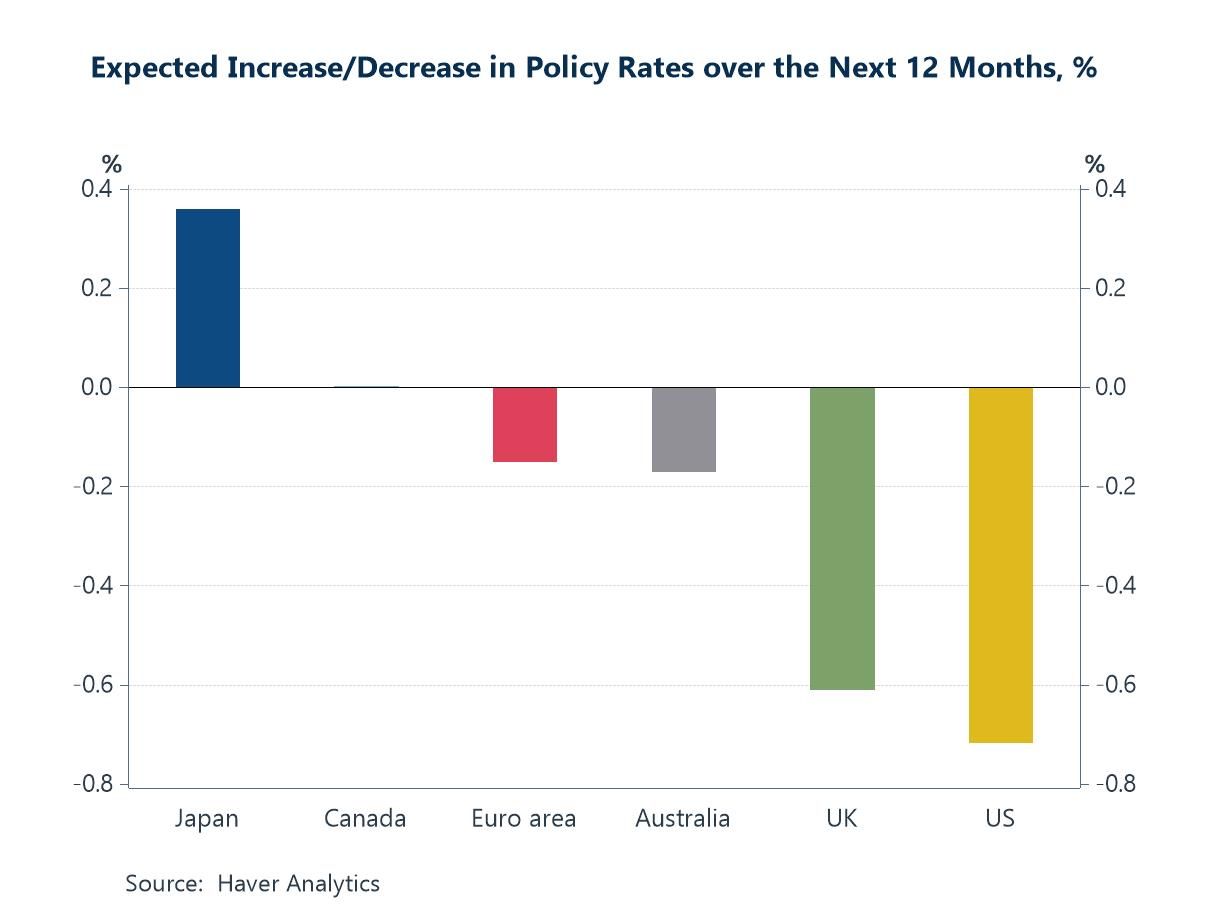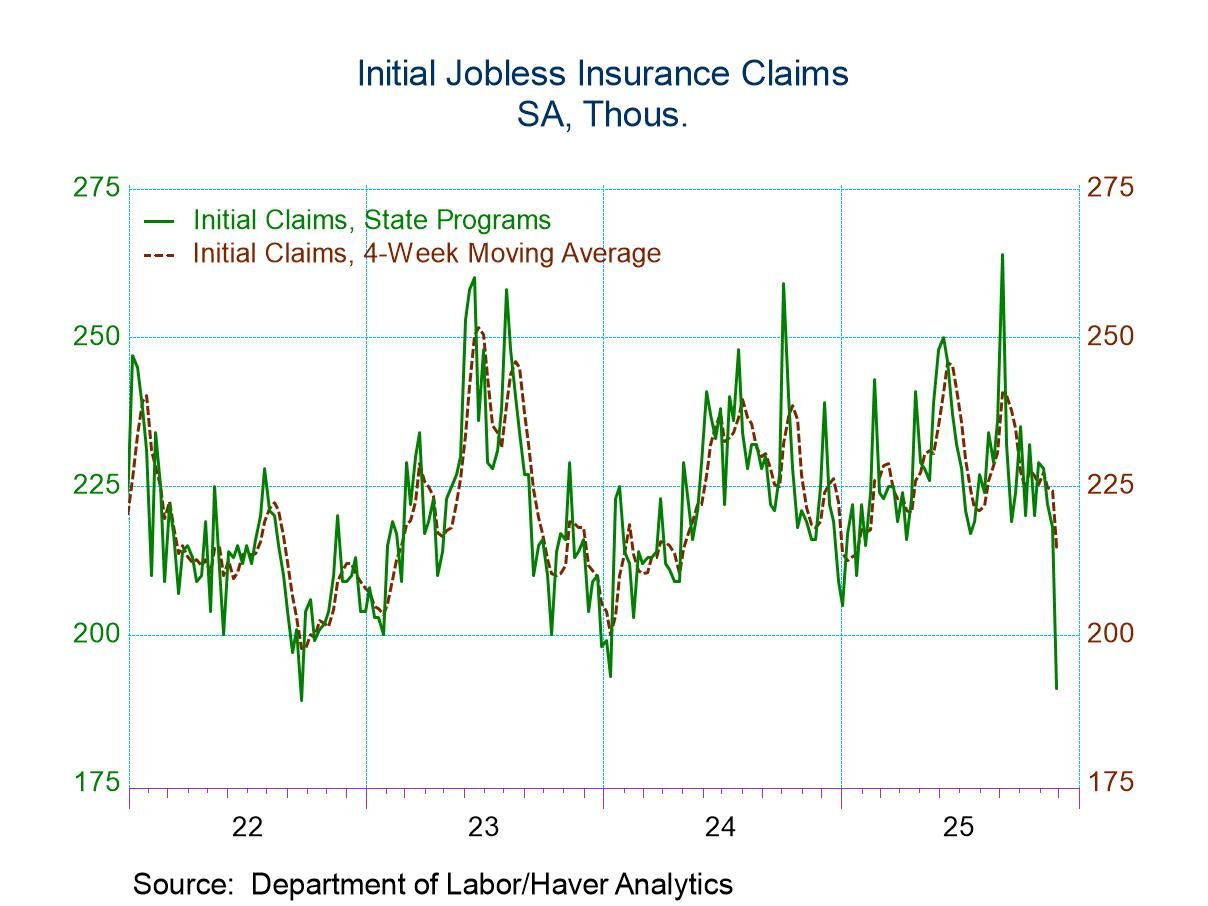Japan’s MOF Business Outlook Survey- A Step back But with Optimism

The outlook survey Japan's Ministry of Finance business outlook survey for business conditions among large enterprises registered a decline in the second quarter, posting a -1.9 reading in the current quarter compared to 2.0 in the first quarter and 5.7 in the fourth quarter of 2024. Manufacturing enterprises registered even weaker results with a -4.8 reading in the second quarter, down from -2.4 in the first quarter and compared to +6.3 in the fourth quarter. Even nonmanufacturers in the second quarter logged a negative response at -0.5, compared to +4.1 in the first quarter and +5.4 in the fourth quarter of 2024. These are all responses from large enterprises.
The survey also covers medium and small enterprises; both medium and small enterprises showed negative figures for the second-quarter business conditions. For medium enterprises, the drop was to -0.9 from +0.7 in the first quarter and +3.8 in the fourth quarter. Whereas medium-sized enterprises showed less change with a -12.3 response for the second quarter compared to -12.7 in the first quarter and -4.7 in the fourth quarter. Small enterprises seem to be facing difficulty.
General conditions for the domestic economy in the survey for large enterprises showed a fall off to -6.2 in the second quarter from +3.1 in the first quarter and +4.2 in the fourth quarter. Drop offs were apparent for manufacturing and for nonmanufacturing establishments. Medium-term enterprises showed a similar and sharper drop off and small enterprises saw weakening worsening with the overall negative numbers being posted for the second quarter even weaker than what they registered under business conditions.
On the employment side, large enterprises posted a 26.9 reading in the second quarter, a decrease from the first quarter reading of 28.3, compared to a fourth quarter reading of 27.4. Manufacturers showed flat employment responses; nonmanufacturing enterprises showed weakening responses. Medium and small enterprises both show a pattern of weakening.
The Outlook In addition to the current quarter responses, there are also one- and two-quarter-ahead outlooks provided by the survey. Business conditions for large companies post a +1.5 reading for the quarter ahead and +2.6 for the quarter after that. For medium-sized enterprises, they see a +3.1 reading for the quarter ahead and +3.3 for the quarter after that. Small enterprises log a -5.1 reading for the quarter ahead and -3.8 for the quarter after that.
The readings for the general domestic economy are generally higher than for business conditions for large enterprises. In all cases, the net readings for the general domestic economy for the quarters ahead are better than the assessment for the current quarter (2025-Q2).
One significant caveat here is that the outlook quarter for employment generally shows weaker net readings for the future quarters than for the current quarter -and this is true across the board.
Rankings To understand these assessments better we can look at them as rankings, ranked against their own past responses. The rank standings of the various data across the industry types and various sizes of companies for business conditions shows generally stronger rankings for medium and smaller enterprises than for large ones for the current quarter. Large and medium-sized firms see erosion in conditions looking ahead and farther ahead. But small nonmanufacturing enterprises see conditions firming ahead compared to past responses on this survey.
General domestic economic assessments show weak rankings across the board all below their 50-percentile mark in standing, but all also show improving trends in ranking looking ahead. But the response for small manufacturers even though they obey these same trends, they are extremely weak.
The job market assessments show a rank assessment of 80- and 90- percentile standings across most firms regardless of firm size; the exception is for medium and small manufacturers. But even there while their current quarter standings are below 80%, their outlook remains solid even with a current quarter ranking as low as 41%, small manufacturers get their two quarter ahead employment expectations up into the 80th percentile.

Summing up On balance, this is an upbeat report. Business conditions show some slackening in the current quarter, but then conditions are mostly expected to pick up. When put in historic context using a ranking metrics, conditions look to be quite solid and strong. But the assessment of general domestic business conditions fails to respond as positively as business conditions and employment readings, especially on a ranking basis. These upbeat results are surprising given the tightening by the Bank of Japan as well as uncertainty surrounding, international trade given U.S. tariff policy, and ongoing weakness in China, Japan’s largest trade partner.
Robert Brusca
AuthorMore in Author Profile »Robert A. Brusca is Chief Economist of Fact and Opinion Economics, a consulting firm he founded in Manhattan. He has been an economist on Wall Street for over 25 years. He has visited central banking and large institutional clients in over 30 countries in his career as an economist. Mr. Brusca was a Divisional Research Chief at the Federal Reserve Bank of NY (Chief of the International Financial markets Division), a Fed Watcher at Irving Trust and Chief Economist at Nikko Securities International. He is widely quoted and appears in various media. Mr. Brusca holds an MA and Ph.D. in economics from Michigan State University and a BA in Economics from the University of Michigan. His research pursues his strong interests in non aligned policy economics as well as international economics. FAO Economics’ research targets investors to assist them in making better investment decisions in stocks, bonds and in a variety of international assets. The company does not manage money and has no conflicts in giving economic advice.





 Global
Global
